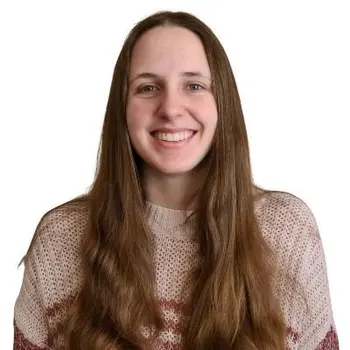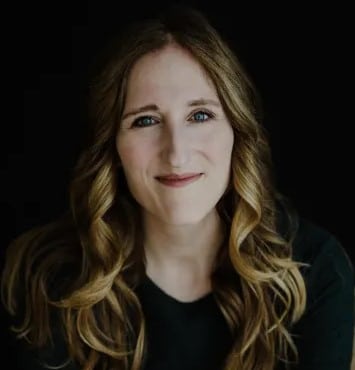Many different sources of illicit drugs and alcohol are available to teenagers, including through fake IDs, finding drugs at home, ordering them online and more.
Adolescent drug use remains a major health issue in the United States. If teenagers aren’t even allowed to buy alcohol or tobacco, where are they getting their drugs from? Unfortunately, there are many different sources that a young person can obtain illicit substances. Knowing about these drug sources is important for parents and guardians who want to protect their children from illicit drug use and addiction.
Article at a Glance:
- Although teen drug use has declined in recent years, it’s still a health crisis in the United States.
- Teens get drugs in schools, with fake IDs, at home and online.
- Parents and other people close to teens have a big impact on their sobriety.
- There are specialized care programs for teens who have an addiction to drugs.
Teenage Drug Usage Statistics and Facts
Overall, teen drug and alcohol abuse are declining. Aside from vaping — which has skyrocketed among students in recent years — teenage use of most drugs has been decreasing for several years in a row. Underage drinking has also slowly declined recently, while teenage marijuana use has remained more or less the same.
Based on 2019 data from the CDC, the statistics on teenage alcohol and drug use indicate:
- 29.2% of high schoolers regularly use alcohol
- 13.7% of high school students regularly binge drink (consuming four or more alcoholic beverages in a row)
- 21.7% of high schoolers regularly use marijuana
- 19.5% of 12th graders have used marijuana in the past month
- 7.2% of 12th graders have used illicit drugs (other than marijuana) in the past year
- 7.2% of high school seniors have misused prescription medications in the past month
How Teens Get Drugs and Alcohol
There are many ways teenagers can get their hands on drugs or alcohol without having to buy them from a store. The high prevalence of illicit substances in most communities gives teens easy access to drugs, both at school and in other places. Groups of teens can develop specific ways to find drugs and distribute them to each other without adults figuring out what’s going on.
Treatment Can Be Life Changing. Reach out today.
Whether you are struggling with addiction, mental health or both, our expert team is here to guide you every step of the way. Don’t wait— reach out today to take the first step toward taking control of your life.
Drugs in School
Many drug transactions occur on school grounds, where teens sell drugs to their peers. At school, teens have access to a larger pool of drugs than what they would be accustomed to seeing in their own social groups.
Teenage drug dealers operate in shrouds of secrecy around campus, potentially making deals on a regular basis. The CDC reports that 21.8% of all high school students say that they have been sold, given or offered drugs on school property.
Fake IDs
A large portion of the alcohol (and marijuana in states where it is legal) that teenagers consume is originally obtained from bars and shops using a fake identification card. A study on fake ID statistics found that about 12.5% of high school graduates use a fake ID to purchase alcohol before they start college. That number jumps dramatically to 32.2% when they are sophomore college students. Research indicates that those who have a fake ID are much more likely to be heavy drinkers than those who do not.
As forgery technology has advanced, it has become more and more difficult for scanners to determine whether an ID is genuine or fake. There are covert businesses that will laminate fake driver’s licenses using photos of underage patrons. Other times, a teenager might steal an ID card from an older sibling or another person who looks similar to them.
Drugs at Home
Teenagers can often find substances they can use to get high right in their own homes. The medicine and liquor cabinets at home are frequently the targets of teens who either abuse drugs or alcohol themselves or sell them to other students at school.
Prescription drug abuse by teenagers is high, especially with regard to performance-enhancing drugs like Adderall or Ritalin and even opiate painkillers. Therefore, it is very important for parents to get rid of any unused medications as soon as possible and to pay attention to whether any prescriptions are running out faster than expected.
Non-prescription drug use in the home is also a major factor that influences teen substance abuse. If parents, older siblings, other relatives or housemates use illicit drugs, teenagers likely have easy access to them. Further, witnessing parents and family members use drugs can legitimize or validate a teen’s own drug use.
Online Drug Sales
Incessant pop-ups or spam emails advertising cheap drugs for sale online are growing more prevalent. Internet searches as simple as “how to find a drug dealer” or “how to buy drugs online” can turn up content that guides teens in the wrong direction. Many web pages that seem legitimate may be fronts for selling illegal substances and are available to anyone, anywhere in the world. Teenagers may learn of these sites through word-of-mouth and can easily buy drugs online.
Teens may also turn to the dark web to purchase illegal drugs or medications without a prescription. The dark web is an encrypted subsection of the internet that is inaccessible without special software or authorization. It is largely used for illegal activities such as drug sales. In 2013, there was a federal takedown of an online drug marketplace called the Silk Road, which had facilitated over a million transactions — totaling over $1 billion in sales — in just slightly more than two years.
Despite Silk Road’s shutdown, similar shady websites remain live and accessible to teens. Today’s teenagers have become increasingly tech-savvy, and many understand how to access the dark web and use it to purchase drugs online.
Illegitimate Online Pharmacies
The dark web aside, the internet is rife with fake pharmacies that sell drugs illegally. Many of these so-called pharmacies are not based in the United States, so they are not subject to American governance. Teens can go online and order any number of prescription medications and have them shipped in discreet packaging.
Buying medications from these illegal online pharmacies is very dangerous. In benign cases, these businesses might simply be providing sugar pills. In more serious cases, these medications may contain highly toxic or even deadly substances. Additionally, there is no quality control to guarantee the actual dosage of a medication purchased through these retailers, making an overdose a very real possibility.
Preventing Teen Substance Abuse
Parents, guardians and other safe adults can have a significant impact on teens’ drug use or sobriety. These individuals play an important role in youth drug abuse prevention.
Friends, family members and other loved ones can help prevent teen substance abuse by:
- Avoiding illegal drug use themselves
- Modeling safe drinking, like drinking only in moderation
- Taking medications only as prescribed
- Having an open, non-judgemental conversation about drug use
- Acknowledging peer pressure at school
- Keeping track of teen activities
- Watching for signs of substance use
- Providing mental health support
If drug or alcohol use is suspected, they may need addiction treatment. Your teen’s healthcare provider is a good place to start for help and resources. Specialized care programs designed for adolescents can provide comprehensive support and treatment for your teen.
If you know or suspect that your teenager is abusing drugs or alcohol, they need help before they suffer serious health and academic consequences. Fortunately, teen-focused rehab services are available. Contact The Recovery Village today to find out what we can do for you and your child.








